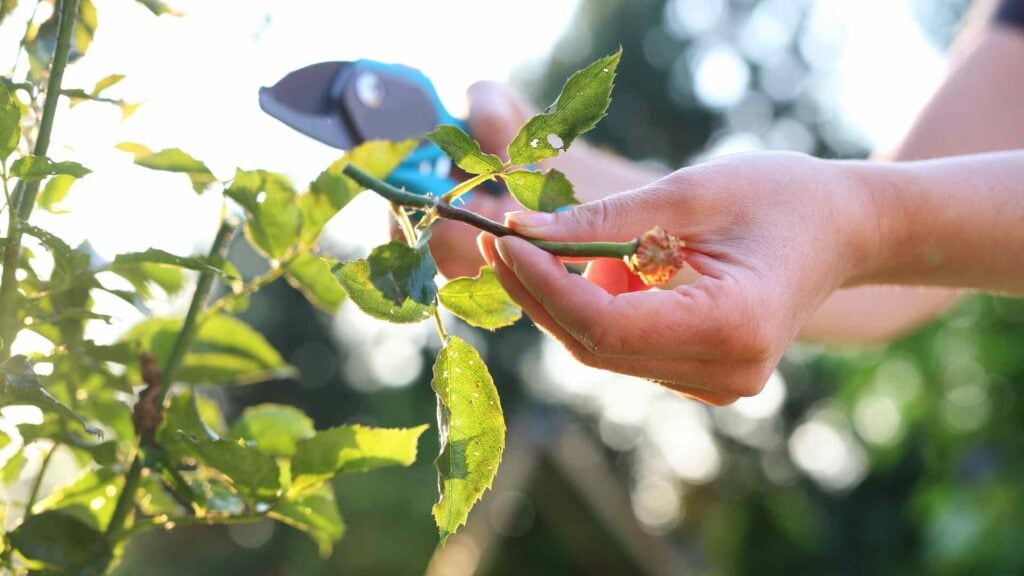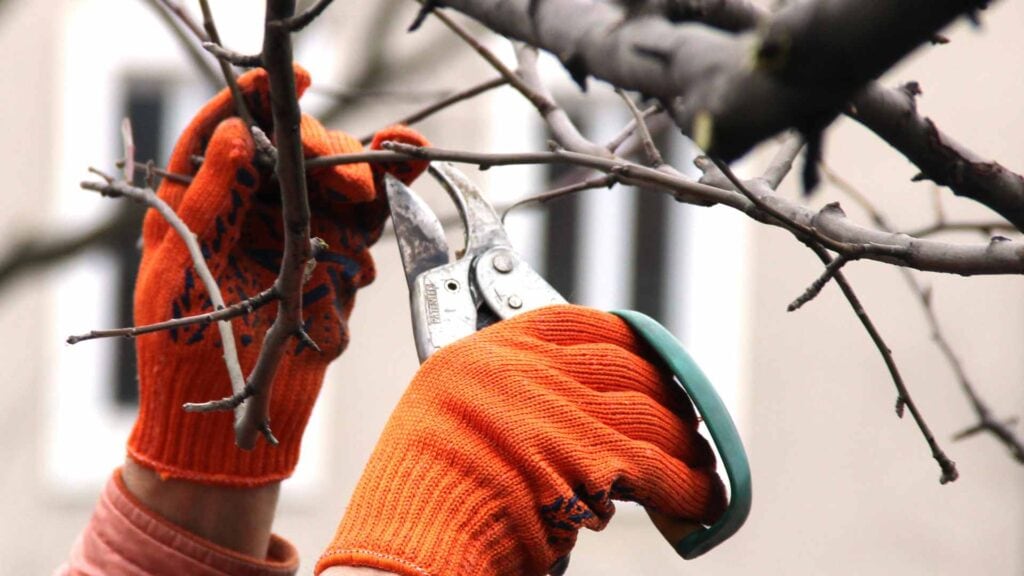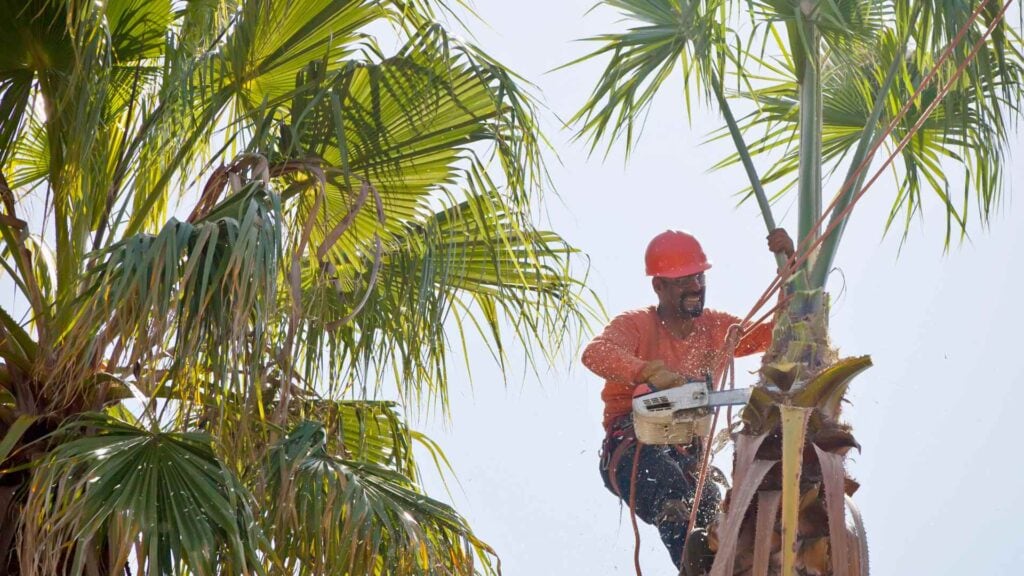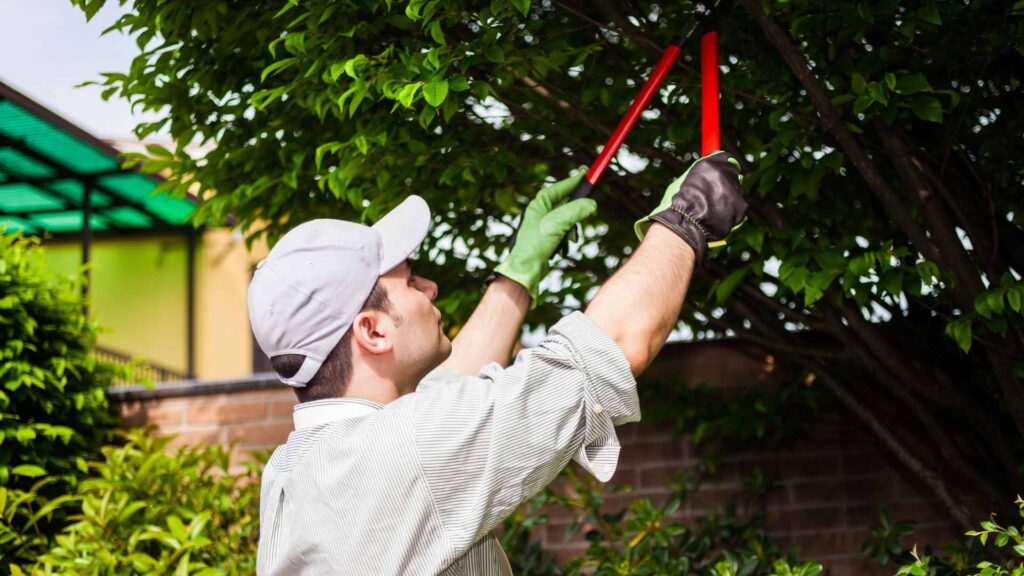Both gardening and arboriculture are more than just a way to make a living; they also represent a stunning fusion of art and science. Is that the canvas? Whether it's your garden, a forest, or just one plant. Which brush? Tools for cutting and trimming. The palette is the wisdom and ability to work with nature to improve plant and human lives.
Pruning is a cornerstone technique in horticulture because it exemplifies this balance between artistic aesthetics and methodical scientific practice. It's the practice of creating artistic sculptures out of live, breathing plants while staying true to the scientific principles of plant biology. Pruning is a crucial part of gardening and arboriculture, and we'll discuss why below.
Combining the art and science of pruning makes it so important, as the former can make your landscape an aesthetic masterpiece. At the same time, the latter can keep your plants healthy and ensure their longevity. If you don't prune correctly, you can have stunted growth, lower yields, or permanent harm.
As we delve into the whys and hows of pruning, we'll also discuss the potential repercussions of ignoring this vital part of gardening and arboriculture. The key to maintaining flourishing, healthy, and visually beautiful landscapes is an understanding of proper pruning techniques, which is essential whether you're a seasoned professional or a green-thumb hobbyist.
So, let's go out on this adventure to explain pruning, where art and science meet to reveal nature's brilliance and beauty. You will find helpful information in this blog, no matter how much or how little experience you have with pruning.
Why Pruning Is Important?
Pruning encourages the healthy development of your plant. Pruning allows you to shape your plants how you want them and promotes their growth and health.

To keep your plants healthy and looking their best, regular pruning is required to remove any diseased or dying branches and any rubbing against one another. To prune is to shorten a plant's growth by removing unwanted parts. This will spur additional development and give you more control over the plant's final form. As a result, there will be plenty of room for development at your plant. Pruning your plants regularly will help keep pests, diseases, and animals away.
More giant trees usually have lower branches that might cause harm to your home or even threaten those walking by. You may reduce both of these risks with proper pruning.
Pruning promotes healthy plant development and keeps you and your loved ones out of harm's way. Damage to plants, stunted growth, and property loss can result from neglectful tree pruning.
Mistakes to Avoid When Pruning
Avoid these common mistakes while pruning to ensure the continued health of your trees and plants.
Poorly Executed Pruning Cut
Proper tree pruning leaves a minimal wound from which the tree quickly recovers. Flush cuts, in which a branch is severed flush to the trunk, and stub cuts, in which the branch is severed too far from the stem, can both be fatal to a tree. After a flush cut, a large, non-healing scar is left on the tree's side where the branch collar was. When only a little piece of the dead branch is removed, the chance of decay spreading through the collar of roots and into the trunk is reduced. Both of these severe injuries will eventually lead to death due to rotting.
Out-of-season Pruning
Pruning is best done when plants are dormant. Thus, winter is a standard time to get it done. However, the best time to prune varies depending on the plant. Some trees, such as palms and cherries, are especially susceptible to silver leaf disease if cut during the winter months. Trees are pruned in the summer to reduce the risk of spreading disease.
Grapevines must be pruned only in December and January, and flowering shrubs should be pruned immediately after they bloom. The plant will bleed sap and weaken if grapevines are cut back while it's too hot outside. The plant may perish in due time. Pruning blunders, including the possible death of plants, can be avoided with enough research to determine when to prune.
Neglecting to Remove Canker
"Canker," a bacterial infection spread through the air, can harm your plants. Injured wood is the entry point for this bacteria to infect trees in the Prunus genus. If you notice any symptoms of this problem, you should prune your plants immediately. Your plant's vitality and longevity will be enhanced. The plant's lifespan may be cut short if care is neglected.
Using Unclean Shears for Pruning
Use high-quality implements for pruning. Pruning tools require regular maintenance, including cleaning and oiling. Pruning shears that have been sharpened and oiled will last longer, perform better, and be safer to use than dull and unclean ones. A clean cut cannot be made with a blunt instrument. Cuts that aren't clean will make your plant more susceptible to illness and lengthen its repair time.
If you want to maintain your pruning equipment germ-free, you can use alcohol. To keep your pruning equipment clean, you can use rubbing alcohol or any other household disinfectant. You can disinfect your pruning tools with ethanol or isopropyl alcohol. Alcohol can help disinfect tools without requiring prolonged soaking. Alcohol can effectively disinfect instruments with just a quick wipe or dip. Make sure to clean and disinfect your pruning equipment after each usage. Otherwise, you risk infecting your plants with the illness when you prune them.
Failure to Get Rid of the "Suckers"
Sucker growths, or offsets, can be seen on the roots of many trees and shrubs. The plants become unwieldy and top-heavy as a result of these suckers. The extra fruit production is partly due to the suckers on these plants. However, the new plant stems must fight with those "suckers" for available nutrients. As a result, the plants will provide inferior fruit and be more challenging to support.
Removing these suckers causes the plants to become more compact, allowing for the production of larger fruits. But the plants will bear fewer fruits as the season progresses. If you want larger fruits, compact plants, and a steady harvest throughout the season, you must prune just the correct amount of "suckers."
Making the Wrong Cuts When Pruning
When pruning, it's essential to do so properly, which entails cutting back on branches above their nodes. New shoots and buds form at the node in a stem. If you don't cut back the branch above this one, your plant could "die back." By doing selective pruning above nodes, you can guide the development of new stems, flowers, and leaves.
A tree's outermost branches are typically cut to give the plant its final form. Cut just above a place where roots are actively growing in the soil. Leave any stem remnants and branches behind. The tree's health and appearance will suffer if it is allowed to lose its original form. Don't prune up against a node or risk damaging it. Don't let it exceed 1 cm over the nodes, though. It may cause your plant to lose its form.
A Tree That Has Been Topped
To top a tree means to remove the top portion of the tree. Putting trees through unnecessary strain like this might weaken their framework and increase the likelihood of a fall. Because topping occurs most frequently when a tree outgrows its designated space, it is crucial to estimate how tall the mature tree will be.
Making a Wrong Cut When Pruning

When pruning, cut at a downward angle. As a result, the trimmed region loses less moisture. In most cases, a 45-degree angle is a good starting point for plant pruning.
The water will pool if you make a flat cut in your plant. Water that collects at a plant's injury site provides a breeding ground for fungi. That leaves your plants wide open to fungal attack.
Constant or Excessive Pruning
During the growing season, it is especially important to avoid over-pruning a tree, since this can cause stress and make it more susceptible to disease. Keep in mind that every slit you make with the pruners is a wound on the tree. Taking away a tree's branches reduces its photosynthesis, its ability to store nutrients, and its future growth. In addition, the wounds left behind after pruning can serve as entry points for wood-rotting fungus, which can eventually kill the tree from its inside out. Too many careless trimming cuts might be fatal to a tree.
Tips on Pruning Safely
Almost every tree and shrub in a landscape can look better with some pruning, but bad pruning can destroy or severely limit its aesthetic potential. Unhealthy plants are often weakened or distorted due to incorrect trimming techniques. Like any other skill, pruning requires practice and knowledge to master. The outdated belief that anyone with access to a chainsaw or pruning saw can perform landscape pruning is unfounded. Every year, poor trimming causes more damage to trees than insects do. Remember that pruning is the process of reducing or eliminating plant components that are no longer needed or serving any purpose for the plant. This ensures the remaining flowers, fruits, and stems have enough nutrients to flourish.
Use the Proper Cutting Angle
If you cut your tree carefully and smoothly, a callus will grow over the wound, protecting it from infection. The collar, the larger bark ring at the base of a branch, should be cut at a 45-degree downward angle. Damage to the stem tissue and eventual disintegration might result from making cuts flush with the trunk. Leaving a stub will either slow the healing process or lead to dieback, both of which are conducive to infestation.
Hold Off Till the Appropriate Season
You can prune your trees whenever you like, but the best period is between midwinter and early spring. There will be less of a chance of spreading illness because the trees and any potential pests will be sleeping through this time. The arrival of spring will also expedite healing and scarring from wounds. Avoid any tree maintenance that can stimulate tender new growth or prevent the tree from entering dormancy in time for winter.
Get the Correct Equipment
Remember that whenever you cut into a tree, you leave a wound that can become infected. Using clean, sharp tools is essential to preventing the peeling of the bark and unnecessary damage to the tree. After removing unhealthy or dead branches, sterilise your pruning tools. Spray some disinfectant on a rag and clean your pruning shears after each use.

Leave It to the Experts
Tree pruning is a crucial aspect of plant maintenance. However, if you are not cautious, you may make serious blunders that will hinder the development of your greenery for years to come. Improper tree pruning can weaken the tree, cause it to seem unattractive, and even kill it.
As a result, consider getting some expert help with tree trimming. Regular tree maintenance and care procedures will be maintained, and the professionals will assist in making your trees look fantastic.
Conclusion
Gardening and arboriculture are a fusion of art and science, with pruning being a cornerstone technique in both fields. Pruning is essential for maintaining healthy, visually beautiful landscapes and preventing damage to plants, stunted growth, or property loss. It involves creating artistic sculptures out of live, breathing plants while adhering to scientific principles of plant biology.
Pruning encourages the healthy development of plants by removing diseased or dying branches and rubbing against one another. Regular pruning shortens a plant's growth by removing unwanted parts, allowing for more control over the plant's final form and reducing the risk of pests, diseases, and animals. Pruning also helps keep giant trees from causing harm to homes or those walking by.
Some common mistakes to avoid when pruning include improperly executed pruning cuts, out-of-season pruning, neglecting to remove canker, using outdated shears for pruning, and using unclean implements. Proper pruning leaves minimal wounds that the tree quickly recovers from, while out-of-season pruning can lead to disease spread and death. Grapevines should be pruned only in December and January, and flowering shrubs should be pruned immediately after they bloom.
It is crucial to use high-quality pruning tools, such as sharpened and oiled shears, to ensure longevity and prevent illness. Disinfecting pruning equipment with alcohol or other household disinfectants can help maintain the cleanliness of the tools without requiring prolonged soaking. It is essential to clean and disinfect pruning equipment after each usage to prevent the spread of illnesses.
In summary, pruning is a vital part of gardening and arboriculture, combining art and science to create visually beautiful landscapes. By following proper pruning techniques, you can ensure the continued health and longevity of your plants and the beauty of your landscape.Pruning trees and shrubs is essential for maintaining their health and appearance. However, it is crucial to remove suckers, or offsets, from the roots to prevent unwieldy and top-heavy plants. This allows for larger fruits and a steady harvest throughout the season.
When pruning, it is essential to cut back on branches above their nodes to guide the development of new stems, flowers, and leaves. Topping a tree can weaken its framework and increase the likelihood of a fall. Cutting at a downward angle is recommended to reduce moisture loss and prevent fungal attack. Over-pruning during the growing season can cause stress and make the tree more susceptible to disease. Careless trimming cuts can lead to fatal damage to the tree.
Content Summary:
- Both gardening and arboriculture are more than just a way to make a living; they also represent a stunning fusion of art and science.
- Pruning is a cornerstone technique in horticulture because it exemplifies this balance between artistic aesthetics and methodical scientific practice.
- Pruning is a crucial part of gardening and arboriculture, and we'll discuss why below.
- Combining the art and science of pruning makes it so important, as the former can make your landscape an aesthetic masterpiece.
- At the same time, the latter can keep your plants healthy and ensure their longevity.
- As we delve into the whys and hows of pruning, we'll also discuss the potential repercussions of ignoring this vital part of gardening and arboriculture.
- The key to maintaining flourishing, healthy, and visually beautiful landscapes is an understanding of proper pruning techniques, which is essential whether you're a seasoned professional or a green-thumb hobbyist.
- Pruning encourages the healthy development of your plant.
- Damage to plants, stunted growth, and property loss can result from neglectful tree pruning.
- Avoid these common mistakes while pruning to ensure the continued health of your trees and plants.
- Pruning is best done when plants are dormant.
- However, the best time to prune varies depending on the plant.
- Trees are pruned in the summer to reduce the risk of spreading disease.
- Pruning blunders, including the possible death of plants, can be avoided with enough research to determine when to prune.
- "Canker," a bacterial infection spread through the air, can harm your plants.
- If you notice any symptoms of this problem, you should prune your plants immediately.
- If you want to maintain your pruning equipment germ-free, you can use alcohol.
- To keep your pruning equipment clean, you can use rubbing alcohol or any other household disinfectant.
- You can disinfect your pruning tools with ethanol or isopropyl alcohol.
- Make sure to clean and disinfect your pruning equipment after each usage.
- Otherwise, you risk infecting your plants with the illness when you prune them.
- The plants become unwieldy and top-heavy as a result of these suckers.
- The extra fruit production is partly due to the suckers on these plants.
- If you want larger fruits, compact plants, and a steady harvest throughout the season, you must prune just the correct amount of "suckers."
- When pruning, it's essential to do so properly, which entails cutting back on branches above their nodes.
- By doing selective pruning above nodes, you can guide the development of new stems, flowers, and leaves.
- Because topping occurs most frequently when a tree outgrows its designated space, it is crucial to estimate how tall the mature tree will be.
- When pruning, cut at a downward angle.
- In most cases, a 45-degree angle is a good starting point for plant pruning.
- The water will pool if you make a flat cut in your plant.
- During the growing season, it is especially important to avoid over-pruning a tree, since this can cause stress and make it more susceptible to disease.
- Keep in mind that every slit you make with the pruners is a wound on the tree.
- Too many careless trimming cuts might be fatal to a tree.
- Almost every tree and shrub in a landscape can look better with some pruning, but bad pruning can destroy or severely limit its aesthetic potential.
- Like any other skill, pruning requires practice and knowledge to master.
- You can prune your trees whenever you like, but the best period is between midwinter and early spring.
- Avoid any tree maintenance that can stimulate tender new growth or prevent the tree from entering dormancy in time for winter.
- Remember that whenever you cut into a tree, you leave a wound that can become infected.
- Using clean, sharp tools is essential to preventing the peeling of the bark and unnecessary damage to the tree.
- After removing unhealthy or dead branches, sterilise your pruning tools.
- Tree pruning is a crucial aspect of plant maintenance.
- However, if you are not cautious, you may make serious blunders that will hinder the development of your greenery for years to come.
FAQs About Improper Pruning
Improper pruning involves using incorrect techniques or timing when trimming trees and plants. It's a concern because it can lead to various negative consequences, such as damage to plant health, reduced aesthetics, and poor fruit or flower production.
Improper pruning can stress plants, disrupt their growth patterns, reduce their ability to photosynthesize and make them more susceptible to diseases and pests. It can also lead to unattractive shapes, reduced fruit and flower production, and long-term structural problems.
Signs of improper pruning can include distorted growth, excessive deadwood, unbalanced shapes, and reduced vitality. If you notice any of these issues, it may indicate past improper pruning.
In some cases, corrective pruning can help mitigate the damage caused by improper pruning, but the extent of recovery depends on the specific situation and the type of plants involved.
The answer depends on your knowledge, skills, and the complexity of the pruning job. It's often best to consult a professional arborist or horticultural expert if you're unsure or dealing with large trees.

